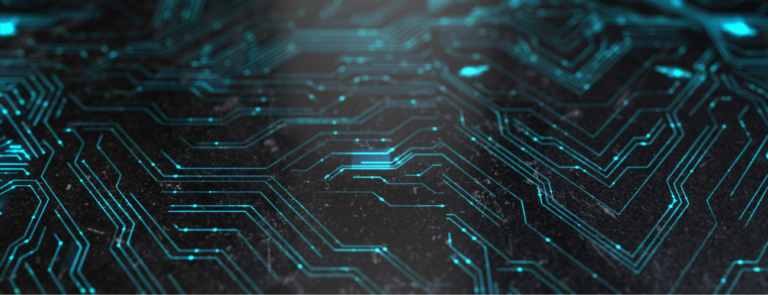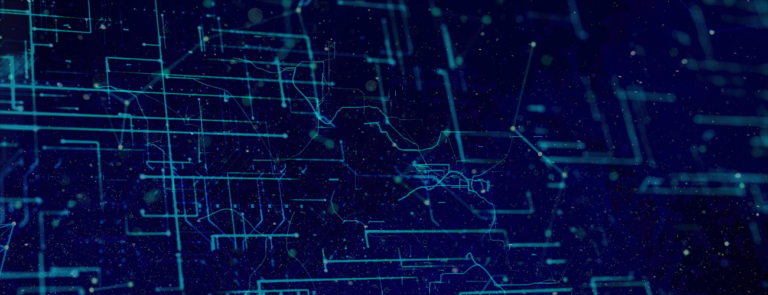
In a recent post, we catalogued the four different access methods IBM Z shops can use to modernize mainframe report and output access. But before you can modernize, you must build the business case for output management modernization to obtain approval to start the project.
Today’s blog details a framework you can follow for gathering the information needed to build your business case for replacing and modernizing your legacy mainframe output management solution. Shown in figure 1, this framework consists of the following elements needed for justifying output management replacement & modernization.
Objectives
Solutions
Total Cost of Ownership
Risks
Time To Values
Cost of Doing Nothing
Figure 1: The six elements needed to build a business case for modernizing an output management solution
Defining these elements (especially the TCO & risk items) will have a very positive impact on presenting your replacement and modernization initiative to organizational leadership.
The information contained in this framework can easily be plugged into any business case justification document, business plan or capital request, making a strong case for output management replacement and modernization. Again, the six elements needed to justify a mainframe output management replacement & modernization project are:
- Objectives: What issues will be solved and what benefits will the business receive with replacement & modernization?
- Solutions: What’s needed to meet your output management objectives (software, hardware/hosting, etc.)?
- Total Cost of Ownership (TCO): What costs & savings will be realized by replacing your mainframe output management solution?
- Risks: What organizational risks are involved with replacing your current solution?
- Time to value: How long before your company starts accruing the benefits of your replacement project?
- Cost of doing nothing: What costs will you incur if the project isn’t implemented?
Detailed information for retrieving and documenting the necessary information for making the business case for replacing and modernizing your mainframe output management system is listed below.
Recorded Webinar.
Time to Replace Your Legacy Mainframe Batch Output/Report Management Product
Objectives
Addressing perceived issues and enabling future benefits are the core reasons for undertaking an output management replacement initiative. Figure two lists out many common objectives for replacing legacy output management solutions, including:
Mainframe & Solution Spending Reduction
- Reduction Reduce Licensing & maintenance
- Minimize spend associated with growth, divestitures & acquisitions
- Reducing mainframe storage costs
- Decoupling software options not being used
Modernizing Mainframe Output Access
- Providing universal access to mainframe output using a Web user interface (browser)
- Enabling enterprise DevOps applications to access mainframe output and report data, using REST APIs
- Providing developers access to using preferred DevOps tools, including Integrated Development Environments (IDEs)
Architectural Changes 8 & Distributed Processing
- Hosting mainframe output management on other platforms
- Moving to a distributed processing platform
- Migrating archived reports to non-mainframe servers
- Decoupling software options not being used
Vendor & Personnel Issues
- Avoiding significant cost increases for current product
- Product discontinued or vendor drops support
- Experienced systems engineers & practitioners are transitioning out of organization
Figure 2: Common objectives for replacing legacy output management solutions
Defining your objectives provides a clear picture of why a replacement output management solution is justified, and they should be included in your business case for modernization/replacement.
Solutions
Once you’ve identified the objectives for your replacement solution, research potential solutions and the cost of each relevant alternative. Research, Identify and contact vendors with output management solutions, such as SEA’s TRMS report management and SAVRS output management systems, to discuss your needs.
Pricing out costs for a replacement solution
Most vendors will help you determine how their solution meets your needs and provide a quote.
Quotes should include pricing for:
- Solution licensing fees or capacity-based licensing fees
- Solution maintenance fees
- Cloud service/managed service provider/data center expense (if relevant)
- Conversion services from old solution database to new database
Some vendors such as SEA provide no-cost conversion services; other vendors may offer paid conversion services or recommend a preferred conversion partner for migration to your new solution.
DIY solutions and migrating output off the mainframe
If you are planning on implementing a DIY solution for output management software replacement (not recommended), estimate the cost of writing an in-house solution or rewriting your existing solution, complete with any other costs.
If you are migrating IBM Z reports and outputs off your existing mainframe partition, gather the costs associated with accessing the reports from an off-site hosted system, service or cloud provider.
Gather mainframe-related costs such as z/OS processor expenses related to your new solution.
Total Cost of Ownership (TCO)
The IBM Z’s DNA—its very existence—is based upon cost effectiveness and scaling cost effectively as workload grows. In terms of building your case, the most obvious thing to look at is what’s the cost? Costs and savings are a very big issue for your output management business case. If you or your current vendor are not addressing spend reduction and savings in your business case and they’re not showing you how they’re going to address that cost marker, you’re starting with a very high hurdle to jump in approving your software replacement plan.
First gather your existing costs
Gather any expenses associated with your current legacy output management solution, including:
- Unpaid solution licensing fees to be paid and payment schedule
- Solution maintenance fees
- Service provider or cloud provider costs
- Hosting costs to run solution (servers, hosting fees, if any)
- z/OS processor expenses related to existing solution
- The costs of upgrading your existing licensing
- Other mainframe-related fees related to legacy solution
- Termination expense for decommissioning old legacy system
Comparing current costs against anticipated replacement costs
You can determine what your spend reduction capabilities will be by comparing your current costs against the replacement solution costs gathered above.
Use the equations listed in Figure 3 or other calculations mandated by your organization to determine the Total Cost of Ownership (TCO). These equations will help you determine how you can reduce spend by replacing your existing output management with a new solution.
TCO: Current Solution = Current solution maintenance fees + current service provider/cloud provider fees + hosting costs + z/OS processor expenses + other mainframe-related fees
TCO: Replacement Solution = Replacement solution maintenance fees + replacement cloud/managed service provider/data center expense + replacement z/OS processor expenses + other mainframe-related fees
One-time costs for replacement solution = Solution license fees + start-up fees (if any) + conversion services + termination expenses for migrating off old legacy system to new output management solution
TCO reduction in spending = TCO of current system – TCO of replacement system
Figure 3: TCO & other equations for justifying mainframe output solution replacement
Management may also expect that you will amortize the one-time costs for the replacement solution in your business case, for taxation purposes.
Risks
The Mainframe platform is world-renowned for its scalability and its availability. Any change and the impacts of that change must be minimal or certainly within your risk appetite.
Defining your risk defines the negative impacts that may be introduced when you implement a new solution. Here are some of the risks you may encounter when deciding to replace a legacy output management system with a modernized mainframe output management system.
- Capacity risks: What happens if your environment grows or shrinks significantly, and the software is wrongly sized for the change?
- Conversion risks: Migration and access issues associated with making archived and current reports & other outputs available in the new solution
- Architectural risks: Risks associated with migrating mainframe reports and other output to another platform, such as hosting archived reports on an external Windows server or running the software on a distributed platform
- Cost risks: Excessive termination fees or other costs associated with replacing your legacy program licensing, as detailed in the section above
- Opportunity risk: If your organization decides to replace its output management software, what other proposed projects will be delayed or discarded in favor of the output management replacement project? Will the net-plus from implementing your new solution be greater than implementing another proposed solution?
Risk analysis for changing your software should be included in your business case for a new output management system.
Also note that acknowledging risks can be positive by pointing out risk response strategies that can be taken when one or more risks are realized. Risk response actions include removing the risk, mitigating it (reducing the impact), transferring the risk, and contingency plans.
Time to Value
Generally, the sooner that you go live with your new solution, the sooner you will realize the benefits of the implementation. Upon implementation, you will also exchange the risks you were incurring running the old software for the benefits & risks with the new software. Expected time to value (how long it will take to go live with a new solution) will be dependent on several factors, including:
- Resource availability (personnel, consultants, equipment, telecom, etc.)
- Time needed for migration
- Business considerations
- Yearly schedule (times of year to implement or avoid implementing a new solution, ex., holidays, year-end closing, etc.)
Consult with your recommended implementation team, solution vendor and any conversion service partners to determine what the implementation timeframe will be and include that number in your business case.
The Cost of Doing Nothing
The business case should also include what risks the organization will incur if they don’t implement a new output management solution. Some of the possible risks to staying with your current solution include:
- Personnel cost: For a legacy solution, will you continue to have personnel who understand and can maintain the software? Will those personnel stay with the organization or are they likely to retire or leave, taking their specialized knowledge with them?
- Growth cost: Does the existing solution have enough capacity to grow with the organization in the event of unexpected growth, mergers, acquisitions, divestitures, etc.?
- Processing cost: Does the existing solution provide modernization capabilities such that users, developers and applications can access mainframe output universally from Web browsers, Integrated Development Environments (IDEs), and enterprise DevOps applications?
- Support cost: Will yearly maintenance and other costs for your existing solution continue to increase as solution demand increases?
- Obsolescence cost: Will your existing solution continue to be offered by your vendor and will vendor support continue to be adequate for your solution needs?
Making the business case for modernization
Taken together, these six elements (Objectives, Solutions, Costs, Risks, Time to Value and Cost of Doing Nothing) are critical to documenting and justifying legacy output management replacement & modernization. Each element should be included in your business case to make a strong case for replacement.
Good luck with your modernization projects. Please feel free to contact SEA at info@seasoft.com for more information on determining your output management modernization objectives, replacement options, costs, and risks.




